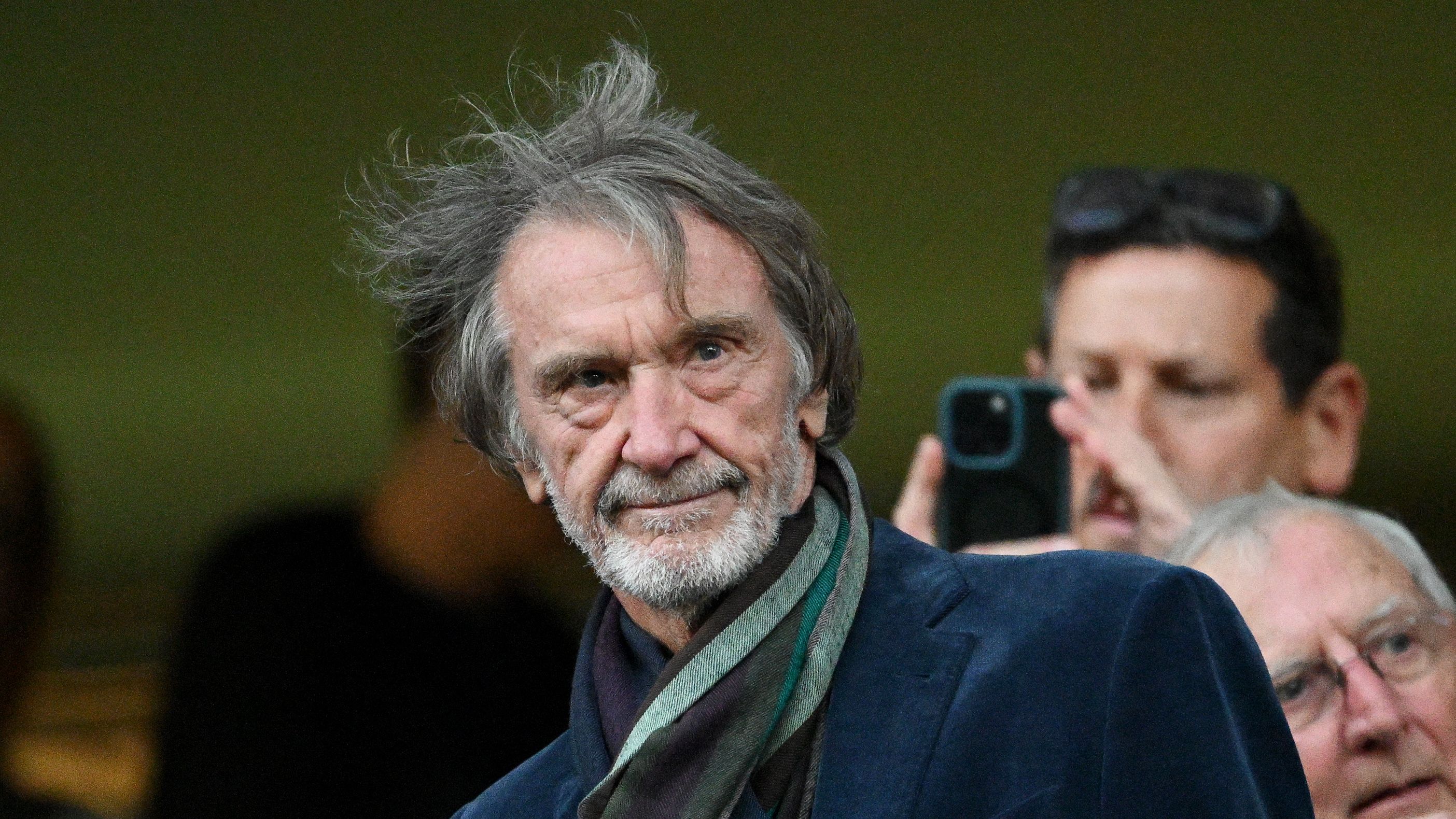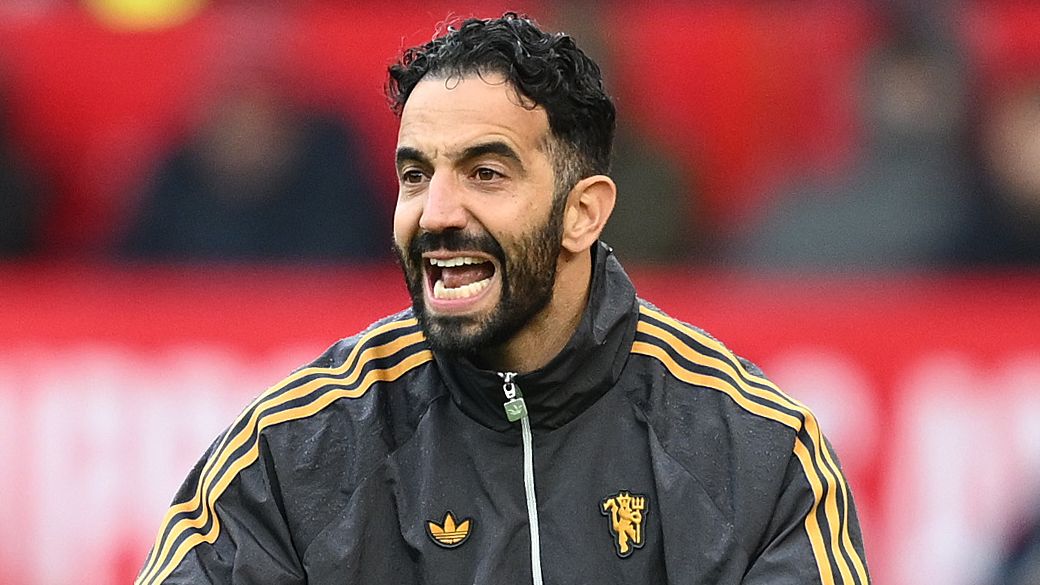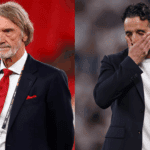Uncovering Hidden Signals in Ratcliffe’s Discussion on Amorim’s Manchester United Era
In a compelling analysis of non-verbal cues, body language expert Inbaal Honigman has highlighted potential indicators of unease in Sir Jim Ratcliffe’s responses about Ruben Amorim’s role at Manchester United. During his appearance on The Times’ Business podcast, the co-owner attempted to ease concerns over the manager’s position, but subtle physical signs may tell a different story, sparking intrigue among fans and analysts alike.
Decoding Ratcliffe’s Interview Amid Rising Pressures at Manchester United



The Billionaire’s Stance on Managerial Stability
In his latest media engagement on The Times’ Business podcast, Manchester United’s partial owner Sir Jim Ratcliffe fielded questions about the ongoing tenure of head coach Ruben Amorim. With increasing scrutiny on the Portuguese leader due to an underwhelming launch to the Premier League season, Ratcliffe brushed aside talks of termination and advocated for allowing Amorim sufficient opportunity to exhibit his skills. He outlined a vision spanning three years for the coach to establish results, underlining the importance of resisting hasty responses to fleeting difficulties.
Amorim’s Challenges and Ongoing Speculation
Despite Ratcliffe’s affirmations, doubts persist regarding Amorim’s stability within the team. The ex-Sporting CP strategist has faced substantial hurdles since joining Old Trafford in late November, managing victories in only 10 out of 34 league encounters. Currently positioned 10th in the Premier League standings and having exited the Carabao Cup against Grimsby Town, these setbacks have only intensified the spotlight on his leadership.
Doubts Among Fans and Internal Divisions
Even with Ratcliffe’s overt support, skepticism lingers among the fanbase and commentators about Amorim’s effectiveness. Insider reports indicate splits among the Glazer family and Ineos officials concerning the duration of backing for the 40-year-old. Although Ratcliffe urged for endurance, observers have scrutinized his on-camera demeanor, suggesting it might expose underlying reservations about the club’s direction.
Expert Insights into Ratcliffe’s Non-Verbal Behaviors
Signs of Discomfort and Concealment
Body language specialist Inbaal Honigman examined Ratcliffe’s session for OLBG and determined that his physical expressions pointed to unease and possible lack of full transparency. She described how folded arms act as a defensive barrier, especially evident when Ratcliffe’s hand rested on his bicep in a comforting self-embrace, as if shielding from probing inquiries. Additionally, frequent eye blinks during key exchanges were flagged as classic markers of evasion.
Balancing Confidence with Underlying Tension
Honigman further observed that certain actions, such as Ratcliffe’s assertive, slicing hand gestures, conveyed resolve and a defined strategy. Yet, his fluctuating body position and momentary self-comforting habits revealed elements of stress and guardedness, implying he might be withholding complete details on Amorim’s prospects. These behaviors, according to Honigman, are common when people project assurance while grappling with internal doubts.
Contradictions in Club Strategy and Future Outlook
Alignment with Long-Term Rebuilding Efforts
Honigman’s evaluation echoes the conflicting narratives surfacing from Manchester United lately. Ratcliffe has championed a patient approach, yet internal discussions reportedly include performance evaluations and backup strategies. Amorim’s strategic difficulties, including his reliance on a three-defender setup and whispers of player discontent, have deepened questions about his capacity to revitalize the squad.
The Role of Ineos in Seeking Stability
Ratcliffe’s remarks arrive at a pivotal moment in Manchester United’s ongoing transformation. The Ineos entity, holding a minority yet influential share in football matters, stresses the need for consistency to reclaim dominance in English football. Ratcliffe’s focus on extended planning fits his overall aim for enduring operations and player acquisition.
Inconsistencies Fueling Curiosity
The discrepancy between Ratcliffe’s spoken assurances and his visible discomfort has piqued interest from followers and experts. Amorim’s time at the helm has been characterized by variability, and Ratcliffe’s displayed hesitation could indicate that Ineos is considering alternatives. Factors like the financial implications of removing Amorim prior to his first anniversary-estimated at £12 million-might be shaping the organization’s measured response.
Current Season Struggles and Upcoming Tests
Heightened Examination of Leadership
The team’s difficulties this year have amplified criticism of its refreshed management framework. Following a 15th-place finish last season and a Europa League final defeat to Tottenham, there were strong hopes for improvement. However, after seven matches this term, Manchester United lingers in the middle of the table, highlighting the obstacles Amorim must overcome to gain backing from his squad and executives.
Critical Matches on the Horizon
Manchester United resumes play post-international break with a tough away fixture against Liverpool at Anfield on October 19. Amorim’s team is expected to produce a standout performance to dampen rumors about his job. Should they falter, it might prompt earlier deliberations within Ineos on the necessity for a shift.
Ratcliffe’s Leadership Under Scrutiny
For Ratcliffe, the forthcoming period will challenge his strategic mindset and rapport with the audience. Having committed to supporting Amorim, both specialists in body language and enthusiasts will monitor for additional hints of uncertainty. At Old Trafford, the priority is on maintaining steadiness, but with ongoing performance swings, this commitment will undergo its most rigorous test yet.
Signs of Tension in Sir Jim Ratcliffe During the Interview
Body language experts often scrutinize high-stakes interviews like the one involving Sir Jim Ratcliffe and Ruben Amorim’s future at Manchester United, where signs of tension can reveal underlying stress or discomfort. In this analysis, we’ll dive into how a body language expert might interpret Ratcliffe’s nonverbal cues, focusing on key indicators that suggest tension. For instance, during discussions about Manchester United’s managerial changes, experts note subtle shifts in posture and facial expressions that can signal unease.
One common sign is the way Ratcliffe might have avoided direct eye contact, a classic body language indicator of tension. Experts observe that when individuals like Ratcliffe are grilled on sensitive topics, such as the potential exit of a key figure like Amorim, their gaze might wander or fix on neutral objects. This evasion could stem from the pressure of maintaining Manchester United’s competitive edge while navigating fan expectations and internal decisions.
Another telltale sign is fidgeting or restless movements. Body language analysis of Sir Jim Ratcliffe might reveal him adjusting his tie, shifting in his seat, or tapping his fingers-actions that body language experts link to heightened anxiety. In the context of an interview on Ruben Amorim’s future, these behaviors could indicate Ratcliffe’s internal conflict over strategic choices at Manchester United, where every decision impacts the club’s legacy and performance.
Physical Posture and Its Implications
Experts often break down posture as a primary body language cue. In Ratcliffe’s case, a body language expert might point to slumped shoulders or a guarded stance as evidence of tension. For example, if Ratcliffe leaned away from the interviewer while discussing Amorim’s role, this could signify defensiveness, a common response when secrecy around Manchester United’s plans is at play. Such posture not only reflects personal discomfort but also hints at the broader challenges of managing a high-profile football club.
Moreover, facial micro-expressions like furrowed brows or tightened lips are crucial. A body language expert analyzing footage might highlight how Ratcliffe’s expressions fluctuated during questions about Amorim’s contract, potentially indicating suppressed frustration or the weight of unrevealed information. These nuances in body language during interviews on topics like Manchester United’s future can provide deeper insights into executive decision-making.
Indications of Secrecy in Sir Jim Ratcliffe’s Behavior
When it comes to secrecy, body language experts look for cues that suggest withholding information, especially in interviews tied to Manchester United’s strategic moves. Ratcliffe’s potential use of blocking gestures, such as crossing his arms or placing objects between himself and the interviewer, could be interpreted as barriers to openness. In the discussion of Ruben Amorim’s future, these actions might imply that Ratcliffe is guarding sensitive details about transfers or managerial shifts.
Voice modulation is another key factor. Experts note that a lowered tone or hesitations in speech can signal secrecy. For Ratcliffe, pausing before answering questions about Amorim might indicate careful word choice to avoid leaks, a tactic often seen in body language analyses of business leaders in football. This vocal control ties into Manchester United’s culture of discretion, where maintaining secrecy around player futures is essential for competitive advantage.
Common Gestures That Signal Concealment
In body language terms, gestures like touching the face or covering the mouth are red flags for secrecy. An expert might analyze how Ratcliffe rubbed his chin or averted his eyes when probed about Amorim’s long-term plans, suggesting he’s holding back. These observations are particularly relevant in high-tension scenarios at Manchester United, where body language experts help decode the unspoken dynamics of leadership.
Furthermore, inconsistent smiling or forced laughter could expose underlying secrecy. If Ratcliffe’s smiles didn’t reach his eyes during the interview, a body language expert would flag this as inauthentic, possibly masking concerns about Manchester United’s direction. Such insights from body language analysis underscore the importance of nonverbal communication in understanding executive behavior.
Benefits of Body Language Analysis in Interviews
Understanding body language, like in the case of Sir Jim Ratcliffe’s interview on Ruben Amorim’s future at Manchester United, offers several benefits. For readers interested in sports psychology or leadership, it enhances awareness of how nonverbal cues influence public perception. Body language analysis can help fans and analysts predict outcomes, such as managerial changes, by spotting early signs of tension and secrecy.
In a broader sense, this practice benefits professionals in fields like media and business by improving interview techniques. For instance, journalists can use these insights to ask more probing questions, while executives learn to manage their own body language for better control in high-stakes settings.
Practical Tips for Spotting Tension and Secrecy
If you’re keen on analyzing body language in real-time, here are some practical tips:
- Watch for eye movements: Look for prolonged blinking or gaze avoidance as indicators of tension, as seen in interviews like Ratcliffe’s.
- Observe hand gestures: Note if someone uses closed fists or protective poses, which might signal secrecy during discussions on topics like Manchester United’s strategies.
- Pay attention to breathing patterns: Rapid or shallow breaths can reveal underlying stress, a tip that’s invaluable for body language experts reviewing footage.
- Contextualize with environment: In a setting like a Manchester United press conference, consider how the room’s formality amplifies cues of tension.
These tips can be applied to everyday situations, making body language analysis a valuable skill for anyone following football dynamics.
Case Studies from Similar Interviews
Drawing from past case studies, body language experts have examined figures in similar positions. For example, in interviews with other Manchester United executives, analyses revealed comparable signs of tension during contract negotiations. One study highlighted how a CEO’s rigid posture mirrored Ratcliffe’s potential behavior, leading to accurate predictions of player departures.
In another case, a body language review of a Premier League manager’s interview showed secrecy through minimal facial expressions, akin to what might be observed with Ratcliffe. These studies emphasize how body language patterns recur in high-pressure environments, offering predictive value for Manchester United’s future moves.
First-Hand Experience from Body Language Experts
From the perspective of experts who’ve analyzed numerous interviews, working on cases like Sir Jim Ratcliffe’s provides firsthand insights into the nuances of tension and secrecy. One expert shared that reviewing footage from Manchester United discussions often uncovers subtle cues, like micro-flinches, that indicate discomfort. This experience reinforces how body language analysis can demystify complex situations, helping audiences grasp the human element behind football’s biggest decisions.
In summary of these experiences, experts stress the need for context-such as Ratcliffe’s background in business-to interpret signs accurately, ensuring analyses remain grounded and insightful.









